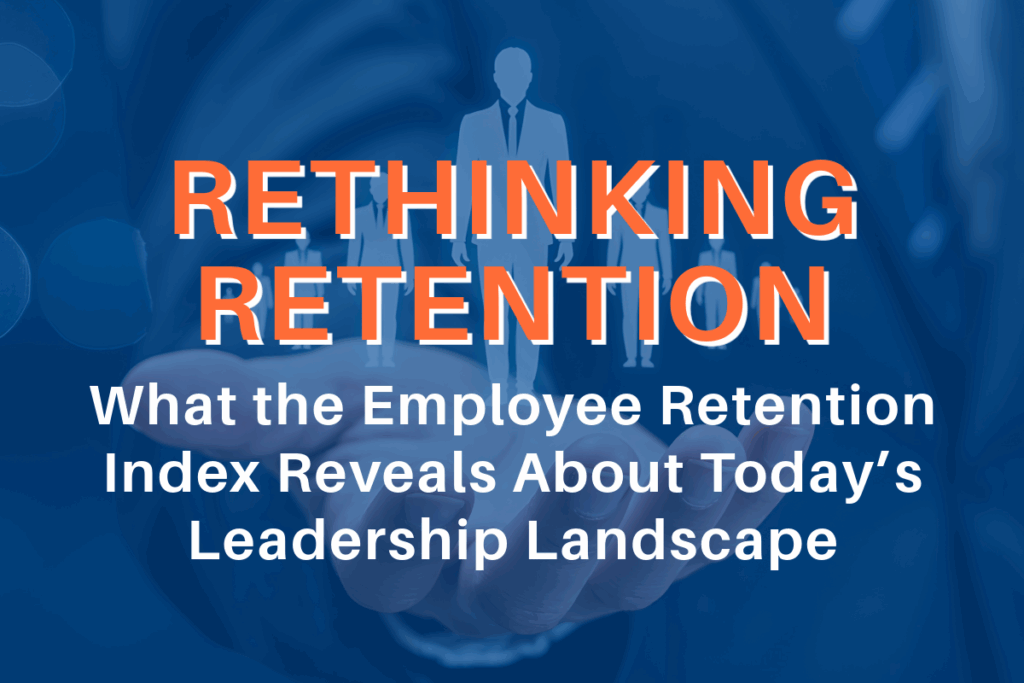IndustryWeek recently published an article summarizing data from the Eagle Hill Consulting Employee Retention Index—a quarterly analysis tracking how likely employees are to stay or leave their current roles. At first glance, the numbers look positive: workforce stability is improving. But beneath that surface, a more complex story emerges. One with direct implications for leadership capacity, succession planning, and long-term value creation.
We’ve reviewed the data and pulled key takeaways for business and operations leaders navigating today’s evolving labor market.
The Retention Story Isn’t as Simple as It Looks
According to the Index, millennials are now the most likely to stay (114.2), while Gen X employees are the most likely to move (97.2). On the surface, that seems like good news, especially after years of record turnover. But Gen X represents a large portion of the nation’s experienced operational and functional leaders. Their movement, even at moderate levels, creates selective openings in critical leadership roles.
Meanwhile, overall mobility has declined across the workforce. That means fewer qualified leaders in motion and tougher competition for replacements when vacancies do occur. The result? Organizations with shallow succession benches find themselves under growing strain to maintain performance and continuity.
The Hidden Challenge: Leadership Bandwidth
Even as the data shows higher compensation satisfaction (109.9) and rising organizational confidence (104.7), another signal stands out: many companies are quietly struggling with leadership bandwidth.
When retention is high, it can mask gaps in capability. Teams appear stable, but in reality, many are stretched thin. During transformation, integration, or post-acquisition value-creation phases, that limited bandwidth becomes a major constraint.
We’ve seen it repeatedly: loyal but overextended leaders doing the work of two or three people, holding the organization together by sheer effort rather than system design. Eventually, growth stalls; not because of strategy, but because execution capacity runs out.
Rethinking Retention Through an Operational Lens
For executives and investors alike, retention shouldn’t just be a sign of stability, it should be a measure of organizational readiness. The question isn’t only, Are people staying? but Do we have the right people, systems, and processes to deliver on our strategic goals?
Leaders should consider:
- Succession Planning: Are next-level leaders being developed before turnover happens?
- Workload Balance: Are retained employees set up to succeed, or are they quietly burning out?
- Capability Gaps: Are we mistaking tenure for capability?
- Cultural Alignment: Does the environment encourage innovation, growth, and trust, or compliance and stagnation?
These questions become especially urgent after a merger, acquisition, or leadership transition. Retention can look good on paper while masking resistance, fatigue, or uncertainty underneath.
The NLP Perspective
At NEXT LEVEL Partners®, we see retention and leadership development as two sides of the same coin. Sustainable performance isn’t built on stability alone, it’s built on capability, trust, and clarity of process.
When Lean principles are embedded at every level, leaders gain visibility into capacity, accountability, and performance health long before they become critical issues. A strong Strategy Deployment Process ensures that leaders aren’t just staying, they’re aligned, empowered, and delivering on what matters most.
High retention may feel comfortable, but comfort rarely drives improvement. The real opportunity lies in turning stability into momentum, equipping your existing team to grow, evolve, and lead at the next level.
In a labor market defined by low movement but high expectations, operational excellence starts with leadership excellence. If you’re navigating talent challenges or need to strengthen leadership capacity during a transformation, reach out to start a conversation with one of our Practitioners.


